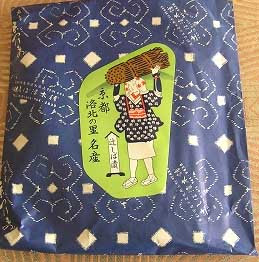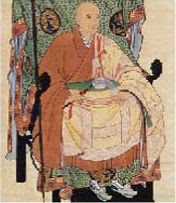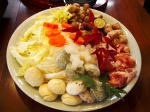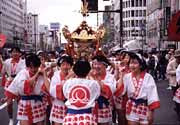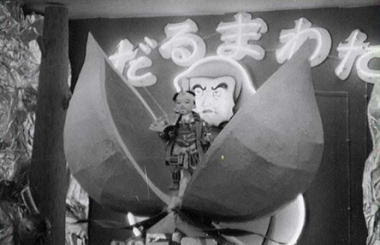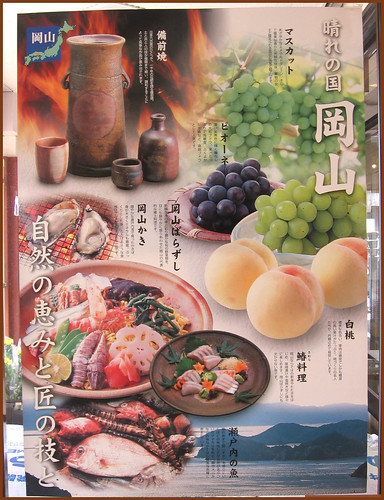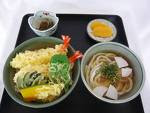::::::::::::::::::::::::::::::::::::::::::::::::::::::::::::::::::::::::::::::::::::::::::::::::::::
Osaka 大阪
Osaka is a city in Japan, located at the mouth of the Yodo River on Osaka Bay, in the Kansai region of the main island of Honshū.
Osaka has traditionally been referred to as the "nation's kitchen" (天下の台所, tenka no daidokoro), or the mecca of gourmet food.
© More in the WIKIPEDIA !
Dootonbori, Dotombori, Dotonbori
Dōtonbori (道頓堀) is one of the principal tourist destinations in Osaka, Japan. It is a single street, running alongside the Dōtonbori canal between the Dōtonboribashi Bridge and the Nipponbashi Bridge in the Namba ward of Osaka. A former pleasure district ...
© More in the WIKIPEDIA !
. . . CLICK here for Photos !
::::::::::::::::::::::::::::::::::::::::::::::::::::::::::::::::::::::::::::::::::::::::::::::::::::
Osaka no kui-daore
***** Location: Japan, Osaka
***** Season: Topic
***** Category: Humanity
*****************************
Explanation
くいだおれ kuidaore
There is an old saying, Osaka no kui-daore — literally, Osaka people want good food even if they have to go broke for it.
Osaka, Shinsekai 大阪・新世界
Kushikatsu Restaurant

The famous kuidaore doll .. くいだおれ人形
The restaurant had to close in 2008.
:::::::::::::::::::::::::::::::::::::::::::::::::::::::::::::::::::::::::::::::::::::::::::::::::::::
Landmark Osaka eatery set to close
A landmark Osaka eatery known for its giant, drum-beating minstrel doll out front said that after nearly 60 years, it is closing.
Osaka Meibutsu Kuidaore (Osaka Famous Kuidaore) restaurant, founded in 1949, faxed the media Tuesday to announce it will shut down July 8 due to difficulties in continuing the family business, as well as the aging of its building and facilities.
The eight-story restaurant serves a wide variety of food, from Japanese to Western.
The minstrel, named Kuidaore Taro, is modeled after bunraku puppets. It has delighted visitors and passersby for decades, serving as a symbol of not only the restaurant but also of Osaka's Dotonbori district.
"Just like the Statue of Liberty, the doll should be placed in a prominent location where people can admire (it) after the close of the restaurant," said a 70-year-old man who came from Nara.
source : Japan Times April 10, 2008
. Kuidaore Taro with special sunglasses .
kinkan nisshoku 金環日食 golden ring eclipse
May 21, 2012 in Japan
:::::::::::::::::::::::::::::::::::::::::::::::::::::::::::::::::::::::::::::::::::::::::::::::::::::
Historic Kansai: Gourmet-town 'kuidaore'
By Junzo Tanaka
Every Japanese knows the phrases 'kidaore' Kyoto and 'kuidaore' Osaka, meaning that the people of Kyoto and Osaka indulge respectively in sartorial and gastronomical pleasures till they go bankrupt. Whatever they may be, hobbies or pleasures, when they are pursued to the extremes, can eat up one's fortunes. The above-mentioned phrases sum up the characteristics of the two major cities in the Kansai region. Kyoto has been the center of luxury kimono production and consumption for centuries, while Osaka has fully taken advantage of its geographical location and developed itself into an important distribution center.
Osaka has always been known for its good foods. Many businesspersons posted in Osaka or visitors to the city just on business trip find Osaka's foods good and inexpensive. If you ask someone which part of Osaka is most kuidaore-like, I am sure that the answer would be 'Minami.' Minami is not the name of a place but a word that simply means 'south.' There is a wide area to the south of the old city of Osaka where entertainment districts, such as Dotonbori, Sennichimae, Namba, and Shinsaibashisuji, are concentrated and the whole area is called 'Minami.' There are hundreds of entertainment facilities, restaurants and eateries and the place is bustling with people day and night.
It is said that the phrase 'Osaka no kuidaore' was probably born in the middle of Edo period (1603 - 1867), when kabuki theaters and show tents began to crop up in this area. Minami has been thriving ever since and continues to prosper in the 21st century.
However, there have been new developments this year that are attracting attention that perhaps Minami will lose its monopoly on 'kuidaore' culture. These developments are the birth in May of 'Senri China Town' in Senri New Town, a suburb to the north of Osaka City and the birth in October of 'Izumigaoka Ramen Noodle Theater' in a suburb to the south of Osaka City-Senboku New Town. These new towns are mammoth residential complexes far from the center of the city, similar to Tama New Town in a suburb of Tokyo. The former is a town, comprising a total of 26 establishments, including stores selling Chinese grocery or interior items in addition to 18 Chinese restaurants, while the latter is a small town of eight Ramen noodle shops and one octopus cake shop. Business is booming at both places. There are some establishments where you have to wait in long queues for nearly an hour to get in. These places are not serving Kansai's traditional light-flavored Japanese food or traditional noodles. The fact makes the new developments even more interesting.
Given today's business condition in Japan, it is not unreasonable for some people to worry that perhaps this is the beginning of the hollowing out of the traditional town of 'kuidaore.' After all, this is the era of rapid and radical social changes. Stores in inner city shopping centers are being shut down because of the opening of large supermarkets in the suburbs, while there is a hollowing out of industries due to the transplanting of manufacturing plants to China or Southeast Asia. There are concerns that the new developments may be the harbingers of a major migration of the 'culinary industry.'
One day this autumn, I visited the two locations. Both are easily accessible and boast large parking spaces. Many of the cars there bore license plates of neighboring prefectures and cities, such as Kyoto, Kobe, Nara and Wakayama. Senri China Town is located on an upper floor of a shopping building with a beautiful view and laid out as China Town in Kobe or Yokohama. Izumigaoka Ramen Noodle Theater recreates the scene of Dotonbori in the Edo period, and when you enter the building you see Ramen noodle shops, each with a colorful flag resembling that of a kabuki theater. Visitors browse around to see which theater (noodle shop) to enter. Both Senri China Town and Izumigaoka Ramen Noodle Theater had people on hand to direct the traffic to different shops.
When I talked to a middle-aged couple in the queue in front of a Ramen shop, they said, 'We've already had two bowls each. We want to try another one.' They were noodle-shop hopping. I was worried that they might end up eating too much. There were also a lot of young people. They all said that they also frequent Ramen shops in Minami. It is not that they stopped frequenting Minami because of the new shops. They also said, 'For eating out, Minami is the tops. You can choose any food from any place in the world.'
This is to say that Minami is still the king of 'kuidaore' Osaka. It would be safe to assume that hollowing out of 'kuidaore' is not likely to happen in the near future. If so, what do the phenomena in Senri and Izumigaoka signify? I would rather interpret the phenomena that the 'kuidaore' energy of Osaka has boiled over and spilled out to outside of the city. In any event, they mean that Osaka has gained more attractions. It is a good thing.
source : www.kippo.or.jp / Junzo Tanaka
July 20, 2009
and now it is BACK
Kuidaore Taro, symbol of Osaka, returns to Dotonbori
Monday 20th July
Mechanical drum-playing doll Kuidaore Taro, one of the symbols of Osaka, returned to the city’s Dotonbori area Sunday, ending its one-year Odyssey following the closure of the restaurant in front of which it used to stand. The life-size doll was installed in front of a commercial complex that opened the same day near the former Cui-daore restaurant in Dotonbori.
At an opening ceremony held at the complex, Osaka Gov Toru Hashimoto said, ‘‘Dotonbori has restored its popularity thanks to Taro. I’d like to boost this momentum together with you.’’ Kuidaore Taro was originally installed in front of the restaurant in 1950 as its mascot, becoming one of the landmarks of Osaka, known as the city of ‘‘kuidaore,’’ a Japanese word meaning ‘‘to ruin oneself by eating and drinking to excess.’’
Since the restaurant was closed in July 2008, Kuidaore Taro had been loaned out for various events across the nation.
source : Japan Today

::::::::::::::::::::::::::::::::::::::::::::::::::::::::::::::::::::::::::::::::::::::::::::::::::::
Kuromon ichiba 黒門市場(くろもんいちば)
he Market of Osaka at Kuromon / Kuromon Shopping Mall
Until the end of the Meiji Era, the Kuromon Ichiba was called "Emmeiji Market", because there was once a large temple called Enmeiji 延命寺 nearby. Since there used to be a black gate northeast of this temple, the marketplace later came to be called”Kuromon Ichiba Market”(Black Gate Market).
The area is about 600 meters long and has more than 170 shops with fresh vegetables and meat.
. . . CLICK here for Photos !
.......................................................................
Zakoba ichiba 雑喉場 Zakoba fish market

「雑喉場魚市場史 大阪の生魚流通」
The History of Zakoba Fish Market
- quote -
6 Markets in Osaka
The reasons for the development of Osaka's economy are that Osaka was a castle town under the direct supervision of the shogunate, and that its good location for waterway traffic such that it was called the "city of water, " with the Seto Inland Sea in front as well as the Yodo River that connects with Kyoto and the Yamato River that connects with Yamato inland. In addition to these, around the Kanbun era (1661-1673), they opened a westward shipping passage that passes into the Sea of Japan, through the Shimonoseki strait, and then goes through the Seto Inland Sea toward Osaka. The development of marine transport between Osaka and Edo also contributed to the development of Osaka, giving Osaka the pivotal position of the national markets.
The center of commodity distribution in Osaka had been the Dojima Rice Market, the Tenma Vegetable Market, and the Zakoba Fish Market.
The Rice Market in Dojima (堂島)
The Vegetable Market in Tenma
With the increase of the market popularity, there were several movements to build other markets in addition to Tenma, in places such as Dotonbori, Dojima, Horie, and Sonezaki.
- Osaka Municipal Central Wholesale Market
The Fish Market in Zakoba
- 'Ko (喉)' of 'Zakoba' is an ancient suffix to count fish that originated in the fact they carried fish with vine or straw, by sticking it through the fish's gill.
- reference source : ndl.go.jp/scenery/e/column/kansai -
::::::::::::::::::::::::::::::::::::::::::::::::::::::::::::::::::::::::::::::::::::::::::::::::::::
Other OSAKA DISHES
dashimaki teishoku 出汁巻き定食 set meal with omelett
For one omelett, five eggs are used !
. . . CLICK here for Photos !
gatchoo ガッチョウ Gatchoo
local name for kochi コチ(鯒、牛尾魚)in the southern province of Senshu せんしゅう【泉州】.
It is eaten in many ways, kara-age, sashimi or others.
herekatsu ヘレカツ filet cotelette
a combination of the usual pronounciation for Filet HIRE. In Osaka, I is often pronounced as E.
hotto doggu ホットドッグ hot dog
saussage served with finely cut cabbage and curry flavor sauce, even as a breakfast dish in fast food restaurants.
kasu udon カスウドン / かすうどん
made with aburakasu 油粕 leftovers from pressing oil
. . . CLICK here for Photos !
mit Ölkuchen
Maple leaves tempura (momiji tenpura もみじ天ぷら/ 紅葉の天ぷら)
A sweet speciality of the town of Mino 箕面 near Osaka.
maronii マロニー thin noodles made of corn starch
and denpun starch from potatoes
They are used for any hodgepodge like shirataki noodles.
. . . CLICK here for Photos !
Naniwa yasai なにわ野菜 vegetables from Naniwa (Osaka area)
CLICK here for PHOTOS !
for example
Baba nasu (eggplant), Torigai nasu (eggplant), Tennoji kabura (turnip), Kema kyuri (cucumber), Kotsuma nankin (pumpkin), Matsunami kyabetsu 松浪 キャベツ (cabbage、best for Okonomiyaki), Suita kuwai (arrowhead), Senshu tamanegi (onion), Tanabe daikon (radish), Tamatsukuri Kuromon Shirouri (white melons)
Traditional varieties of vegetables are attracting more attention today in the wake of the recent slow food movement. Branding local agricultural products has also become a nationwide trend.
http://www.osaka-brand.jp/en/kaleidoscope/shoku/index2.html
onigiri senbei おにぎりせんべい
Sembei in the form of Onigiri rice balls
they are triangular, with some shreds of seaweed on the outside, which is dipped in soy sauce when baking.
. . . CLICK here for Photos !
pooru uinna ポールウィンナー Wienna saussages "like a stick"
"Pole Wiener"
They are everywhere on the table, standing in a glass, ready to eat for a snack. They are sold in Kansai, made by Ito Ham since 1934.
. . . CLICK here for Photos !
..... tako uinna たこウインア / たこウイーナ wiener saussage cut like an octopus
:::::::::::::::::::::::::::::::::::::::::::::::::::::::::::::::::::::::::::::::::::::::::::::::::::::

Suita kuwai 吹田くわい arrowhead from Suita town
This type is a bit smaller than the normal root, but much sweeter. It is used in the New Year soup, because it has a lucky omen, since its "eyes come out", me ga deru, as a sign of good luck.
It is grown in fields with a lot of fresh flowing water and without any chemicals, this all has to be done by hand. There are now eight farmers in Suita who produce this vegetable. The whole village is trying to promote it as a local product. There is even a maskot, Suitan すいたん, in this form.
CLICK here for PHOTOS of Suitan !
It is eaten simply fried in oil with a bit of salt, to enhance the sweet taste of it.
Experiments with a kind of shochu liquor, or in manju or baked in bread (kuwai pan). Even a Western Style sweet, the Montblanc, with a kuwai at the top is made.
Sagittaria trifolia. Pfeilkraut
New Year Food
WKD : arrowhead 慈姑 (くわい) kuwai
kigo for early spring
:::::::::::::::::::::::::::::::::::::::::::::::::::::::::::::::::::::::::::::::::::::::::::::::::::::
sofuto men ソフト麺 . ソフトめん "soft noodles"
They come in two kinds, like spagetti and like udon.
They were served in school lunches and have not been well known in Osaka.
. . . CLICK here for Photos !
tamago sando, tamagosando たまごさんど sandwich with egg
In Osaka, a fried egg is sandwiched. In other parts of Japan, a boiled egg is cut to small pieces, some mayonaise is added and then sandwiches.
たまごサンド
. . . CLICK here for Photos !
. . . . . . . . . .
takoyaki たこやき たこ焼き octopus balls
a popular ball-shaped Japanese dumpling or more like a savory pancake made of batter and cooked in a special takoyaki pan. It is typically filled with diced octopus, tempura scraps (tenkasu), pickled ginger, and green onion.
Nowadays, it is commonly brushed with takoyaki sauce and mayonnaise, and topped with green laver (aonori) and katsuobushi (shavings of dried bonito). There are many variations to the takoyaki recipe. For example, ponzu i.e. soy sauce with dashi and citrus vinegar, goma-dare i.e. sesame-and-vinegar sauce or vinegared dashi.
The dish became popular after WWII.
- Wikipedia -
quote
Choboyaki was a prototype that later evolved into what we now refer to as takoyaki. This dish was named back during the Taisho period for the drop-by-drop ("chobo-chobo") way in which flour-based batter was grilled on a cast-iron griddle resembling the ones used today to prepare takoyaki balls. The batter, made by dissolving flour (usually used to make noodles) in water, was poured to form a particular shape (onto a metal grill featuring rows of semicircular molds). Konnyaku (yam paste), red pickled ginger, green peas, and soy sauce would be added as the batter continued to cook.
Radio-yaki was a prototype that later evolved into what we now refer to as takoyaki. Radio-yaki was slightly larger than choboyaki, and its name can apparently be traced to the most popular mechanical invention of its day. After innovators came to add such ingredients as sinewy meat, the dish came to be known as radio-yaki. Named after the radio, which was an expensive piece of equipment back then, radio-yaki was a hit snack food among children.
In around 1935, a visitor from Akashi (Hyogo) to Osaka came upon a street stall selling radio-yaki and explained that "they use octopus in Akashi." . . . .
- www.hotland.co.j -
. . . . . . . . . .
Tanabe daikon 田辺大根 たなべだいこん radish from Tanabe
special variety, shorter but tasty.
In Koreatown they prepare kimche from it.
CLICK here for PHOTOS !
*****************************
Worldwide use
*****************************
Things found on the way
芭蕉堂 Bashoodoo sweets studio
Sosaku Wagashi Kobo Bashodo : famous warabimochi 笑来美餅
mochi with bracken powder
“ishiusu taiken (stone milling experience),” where customers can grind top-quality black beans from the Tamba region
"hohoemi mo bimi tazuzaete kitarikeri"
"have a happy smile with nice sweets"
hiyashi ame, senbei, kinako powder, black beans, sugar syrup and many more
source : www.bashoudo.com
warabi ... Adlerfarn. Pteridium aquilinum.
:::::::::::::::::::::::::::::::::::::::::::::::::::::::::::::::::::::::::::::::::::::::::::::::::::::
Coffee Shops
Fast Food
Tachi-nomi ... drink while standing
Hakozushi
Kitsune Udon
Kushi-katsu
Me-oto Zenzai
Okonomi-yaki
Shabu Shabu
Tako-yaki
Tecchiri / tetchiri nabe
Udon-tsuki / udon suki
http://www.osaka-info.jp/en/culture/2007may/07.html
Janjan Yokocho Alley
Naniwa Gyoza Stadium
Naniwa Kuishinbo yokocho
Osaka Takoyaki Museum
source : www.osaka-info.jp Osaka Gourmet INFO
:::::::::::::::::::::::::::::::::::::::::::::::::::::::::::::::::::::::::::::::::::::::::::::::::::::
Osaka Blowfish Station Lunchbox
"大阪特選ふぐづくし"
Osaka Fugu Hakubutsukan ふぐ博物館 Osaka Blowfish Museum
Kishiwada 大阪府岸和田市北町10番2号
*****************************
HAIKU - WAKA
難波潟みじかき芦のふしのまも
あはでこの世を過ぐしてよとや
Naniwa gata Mijikaki ashi no Fushi no ma mo
Awade kono yo o Sugushite yo to ya
Even for a time
Short as a piece of the reeds
In Naniwa's marsh,
We must never meet again:
Is this what you are asking me?
Lady Ise 伊勢
source : etext.lib.virginia.edu

. Ogura Hyakunin Isshu Poems 小倉百人一首 .
Naniwagata, Naniwa-e 難波江 Bay of Naniwa, Bay of Osaka, Marsh of Naniwa, Naniwa Lagoon
a place full of reeds in the old times.

:::::::::::::::::::::::::::::::::::::::::::::::::::::::::::::::::::::::::::::::::::::::::::::::::::::::
MORE Naniwa haiku by
. Matsuo Basho 松尾芭蕉 - Archives of the WKD .
菊に出て奈良と難波は宵月夜
kiku ni dete / Nara to Naniwa wa / yoi zukiyo
難波津や田螺の蓋も冬ごもり
Naniwa zu ya / tanishi no futa mo / fuyu-gomori
明日は粽難波の枯葉夢なれや
. asu wa chimaki Naniwa no kareha yume nare ya .
*****************************
Related words
***** WASHOKU : Regional Japanese Dishes
. Oosaka Kaidoo 大坂街道 Osaka Kaido Road .
:::::::::::::::::::::::::::::::::::::::::::::::::::::::::::::::::::::::::::::::::::::::::::::::::::::
[ . BACK to DARUMA MUSEUM TOP . ]
[ . BACK to WORLDKIGO . TOP . ]
:::::::::::::::::::::::::::::::::::::::::::::::::::::::::::::::::::::::::::::::::::::::::::::::::::::


